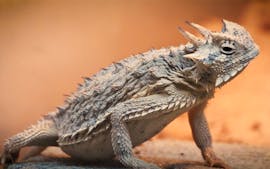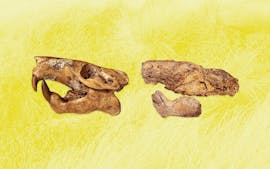Scissor-tailed flycatcher
This is one of the truly great Texas birds, with its long black and white tail, light gray body, and intense pink underwing, which is best seen when it sallies forth to catch an insect. Seeing the first scissortail in the spring is one of the hallmarks of springtime in Texas. I saw a flock of about seventy scissortails on my seventieth birthday last October at Hornsby Bend, my favorite Austin birding site.
Golden-cheeked warbler
Warblers are my favorite birds because their brilliant colors, long migrations, and almost constant motion make them so intensely alive. The golden-cheeked warbler is the only bird that nests only in Texas; it breeds in the lovely Texas Hill Country. The return of the golden-cheek from Central America in early March is a red-letter day for Texas birders. I will never forget seeing my first golden-cheek over fifty years ago on the Mo-Ranch at one of the first meetings of the Texas Ornithological Society.
Sandhill crane
Cranes are another of my favorite bird families. I have seen almost all the fifteen crane species. The sandhill was the first crane I ever saw and remains my favorite. Its guttural call connects us to the Pleistocene. One of the greatest birding experiences of my life was seeing thousands of sandhill cranes on the Platte River in Nebraska.
Green jay
When birders visit South Texas for the first time, this is one of the species that delights them the most. It is perhaps the most beautiful North American bird, with a chartreuse and yellow body, purple head, and bright yellow outer tail feathers. It is a truly stunning creature that only occurs in South Texas and tropical America.
Greater roadrunner
This is one of the great birds of the American Southwest—bold, feisty, large, and striking. When foreign birders visit Texas, this is one of the birds they most want to see. I love the South Texas name for this species, “paisano” (countryman), and the South Texas legend that if a roadrunner crosses your path, you will have good luck. I always feel lucky when a roadrunner crosses my path.
Greater prairie chicken
My memories of these prairie grouse go back to my days as a teenage birder, when greater prairie chickens still were found on the outskirts of Houston. I love observing bird behavior. The dances of the prairie grouse are some of the most interesting examples of avian courtship. These dances were imitated by the Plains Indians. The low booming sound the males produce as they expel air from the inflated orange sacs along their neck is a haunting, lovely sound that connects us with the days when prairies covered much of the Texas coast and the Great Plains.
Hooded Warbler
This is my favorite bird. I grew up in Houston where their appearance on the Texas coast was one of the harbingers of spring. In the summer I saw them breeding in the woodlands of East Texas north of Houston, where I spent many happy days with my mentor Joe Heiser. This is a very beautiful warbler with a bright yellow body and dark green back. The male has a jet black head with an intense yellow area around the eye. It is often seen in shady areas on the ground where its bright colors delight the eye.






